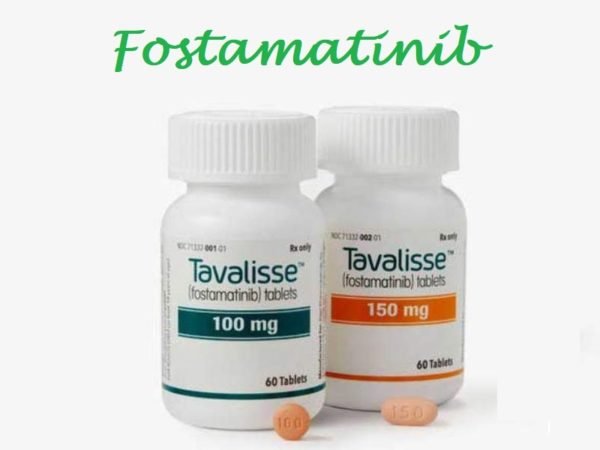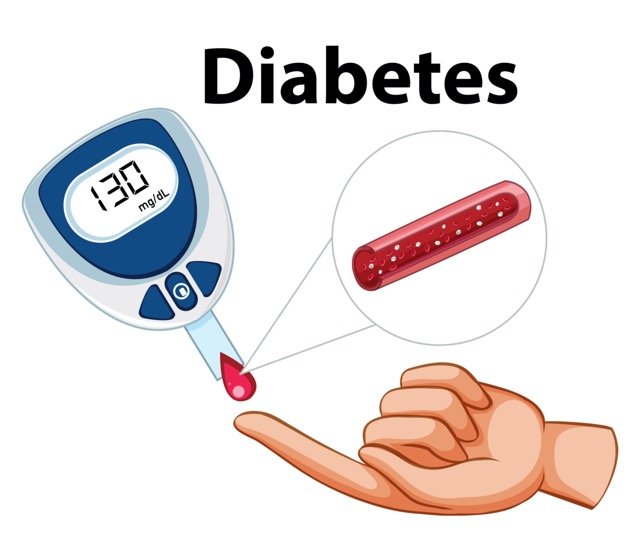Author: Dr. Gule Lala, Internist, Pakistan Institute of Medical Sciences, Islamabad
Fostamatinib (Tavalisse) inhibits the spleen Tyrosine kinase inhibitor that is present on hematopoietic cells primarily the B cells. It is used to treat chronic refractory ITP (immune thrombocytopenic purpura). Before discussing the role of Fostamatinib, lets briefly discuss ITP first.Case scenario:
A 17 yr old adolescent is brought to the ER by his mother who is concerned that he has bruised easily over the past few days and has had a nose bleed this morning. There are no symptoms of other illness and he is otherwise well. On examination, there are generalized petechiae and some bruising mainly affecting the lower limbs. Blood testing reveals a platelet count of 35000/ul, hemoglobin is 11.1 g/dl and his white blood cell count is normal.What diagnosis fits best with this clinical picture?
-
Immune thrombocytopenic purpura (ITP)
-
Henoch Schonlein purpura
-
Thrombotic thrombocytopenic purpura (TTP)
-
Hemolytic Uremic Syndrome (HUS)
What is ITP (immune thrombocytopenic purpura)?
ITP (immune thrombocytopenic purpura) is one of the most common causes of low platelets in otherwise asymptomatic adults. It was previously called idiopathic thrombocytopenic purpura, however, since it is an immune-mediated disease, the term immune thrombocytopenic purpura best describes the disease. ITP can be primary or secondary to an underlying disease. The primary variant was previously called idiopathic ITP.Causes of secondary ITP:
Secondary ITP is caused by a variety of diseases. Some are mentioned here.Medications and Vaccines:
- Alemtuzumab
- Gold
- Ipilimumab
- Nivolumab
- MMR (measles mumps rubella vaccine)
Infections:
- CMV (cytomegalovirus infection)
- EBV (Epstein Barr virus)
- Helicobacter pylori (H.Pylori)
- Hepatitis C virus infection
- HIV (human immune deficiency virus)
- Varicella-zoster virus
- Zika virus infection
Autoimmune syndromes:
- Antiphospholipid syndrome
- Autoimmune lymphoproliferative syndromes
- Evans syndrome
- Inflammatory bowel disease
- Systemic lupus erythematosus
- Rheumatoid arthritis
Lymphoid malignancies:
- CLL (chronic lymphocytic leukemia)
- Lymphoma
Immunodeficiency syndromes:
- Selective Ig A deficiency
- Common variable immune deficiency
Clinical manifestations of ITP:
Clinical symptoms of ITP are due to low platelet counts. Most patients remain asymptomatic until the platelet counts drop to less than 30,000/ul. The patients may present with bleeding manifestations such as epistaxis, gum bleeding, hematuria, bleeding into the gastrointestinal tract, or bleeding into the skin. Bleeding into the skin manifests as petechiae, purpura, or ecchymosis. It is important to note that the patients do not have visceromegaly, lymphadenopathy, or skeletal tenderness. Furthermore, the peripheral smear and bone marrow biopsy is usually normal, suggestive of peripheral destruction.A few definitions to remember:
ITP is defined as newly diagnosed, persistent, or chronic ITP based on the time elapsed.
-
Newly diagnosed ITP:
- Up to three months since diagnosis
-
Persistent ITP:
- Three to 12 months since the diagnosis of ITP
-
Chronic ITP:
- More than 12 months since the diagnosis of ITP
-
Severe ITP:
- ITP is labeled as severe when the patient manifests with bleeding or when the platelets drop to less than 20000/ul.
-
Refractory ITP:
- ITP that is severe, manifesting with bleeding and fails to respond to splenectomy
-
A complete response to treatment:
- A platelet count of >/= 100,000/ul measured on two occasions more than 7 days apart and the absence of bleeding.
-
Partial response to treatment:
- A platelet count of >/= 30,000/ul and a greater than 2-fold increase in platelet count from baseline measured on two occasions more than 7 days apart and the absence of bleeding.
-
No response to treatment:
- A platelet count of less than 30,000/ul or a less than 2 fold increase in platelet count from baseline or the presence of bleeding. Platelet count must be measured on two occasions more than a day apart.
-
First-line therapy:
- First-line therapy usually refers to glucocorticoids, intravenous immunoglobulin, and anti-D
-
Second-line therapy:
- Historically, second-line therapy was referred to as splenectomy. Rituximab and thrombopoietin receptor analogs (eltrombopag and romiplostim) are also considered as useful second-line agents.
What is Fostamatinib (Tavalisse):
The spleen tyrosine kinase (Syk), is primarily expressed in hematopoietic cells and appears to be particularly important in B cells. The major active metabolite of fostamatinib, inhibits signal transduction of Fc-activating receptors and B-cell receptor and reduces antibody-mediated destruction of platelets and appears to regulate allergic, inflammatory and autoimmune responses. It is given in a dose of 100 mg twice daily. The dose is increased to 150 mg twice daily if the platelet counts do not increase to more than 50,000/ul after one month. Treatment should be discontinued if the patient continues to bleed or the platelet counts do not increase to more than 50,000/ul after twelve weeks.Fostamatinib (Tavalisse) side effects:
-
Cardiovascular:
- Hypertension
-
Gastrointestinal:
- Diarrhea
- nausea
-
Hepatic:
- Increased serum ALT and AST.
-
Dermatologic:
- Skin rash
-
Hematologic & oncologic:
- Neutropenia.
Cost of oral Fostamatinib (Tavalisse) tablets in the US:
- 100 mg (per each): $215.24
- 150 mg (per each): $215.24
Long-term fostamatinib (Tavalisse) treatment of adults with immune thrombocytopenia during the phase 3 clinical trial program
- This was a phase 2 study that demonstrated significant improvement in platelet counts in 8 of 16 patients with chronic ITP.
- Subsequently, two identical, 24-week, randomized, double-blind, placebo-controlled, phase 3 multicenter studies demonstrated:
- Stable responses in 17% of patients on fostamatinib versus 2% of patients on placebo (P = 0.007) and
- Clinically meaningful overall platelet responses (≥50 000/μL) in 43% of patients on fostamatinib versus 14% on placebo (P = 0.0006).
- The phase 3 data led to the FDA (US Food and Drug Administration) approval of fostamatinib (Tavalisse) for the treatment of adults with chronic ITP in April 2018.
- After patients completed phase 3 studies, the long-term safety and efficacy of fostamatinib were evaluated in a long-term, multicenter, open-label extension (OLE) study.
- The OLE study allowed patients who had responded to fostamatinib (Tavalisse) in the two randomized trials to continue treatment and allowed patients initially randomized to placebo to experience fostamatinib (Tavalisse).
Study design:
- Randomized double-blind trials (open-label extension trial)
- Patients were evaluated every 2 weeks in the randomized studies and no less often than monthly for 18 months and then bimonthly for up to 5 years in the study.
- The overall response was defined as 1 or more platelet counts ≥50 000/μL within 3 months of starting fostamatinib (Tavalisse) including in the study.
Results of the study:
-
Fostamatinib (Tavalisse) exposure population
- A total of 146 patients received fostamatinib in the three FIT studies (including all but four of the placebo patients in the two randomized trials)
- 49 of the overall 146 (34%) patients were continuing treatment in the OLE study and 97 (66%) patients had discontinued treatment
- lack of response (31% of the 146 patients)
- Adverse events (16%)
-
Summary of the study:
- Overall platelet response was achieved by 64 of 146 (44%) patients
- Of the 69 patients with an insufficient response to TPO agents prior to entering these studies, 24 (35%) had an overall response to fostamatinib and 14 of the 24 maintained platelet counts consistently over 30 000/μL
- Ten (23%) of 44 patients who received placebo in the randomized studies achieved a stable response to fostamatinib in the OLE study
- 27 stable responders among 146 patients (18%) exposed to fostamatinib.
- The median platelet count in patients with a stable response for all post-baseline visits was 89 000/μL, and 22/27 (81%) stable responders virtually always had platelet counts >50 000/μL during treatment in the OLE.
- Patients who achieved an overall response but were not stable responders did not do as well as the stable responders but generally maintained platelet counts above 30000/μL







